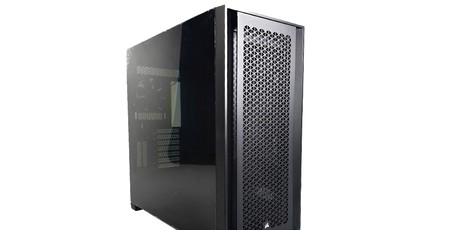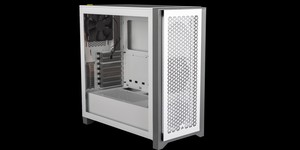The way in which the panels mount is very interesting and the same as the 4000D we reviewed a little while back. 5000D Airflow uses a hybrid hinge/force mount/captive screw system and we believe it is the best method we've seen. You push the panel into the hinges, swing it around. pop it into the mounts and then screw it in. They're easy to take on and off and are very secure, Top marks here.

Inside the case a panel at the front is used to hide the cables coming from the motherboard. This can easily be removed with six screws on the back of the case and screwed back on later. Although possible to build into the case with it still there, it doesn't take a genius to know how we found that out... we wouldn't recommend it.

The case also comes with the rear I/O setup to allow for vertically mounting the GPU if you have a separate riser which can be purchased from Corsair. There's also a 'cable bar' that can be installed at the front bottom of the case. This will give you more space at the front for radiators without having to get the Dremel out.

5000D Airflow has two 3.5in / 2.5in quick-release mounts in the bottom middle, in front of the power supply, and also has 4 SSD mounts on the rear of the motherboard tray and rear CPU portion. These are used by unscrewing the mount from the case using the thumbscrews, screwing the SSD into them, and then using the cut-out hinge, screwed back onto the case using the thumbscrews. Sounds complicated, but isn't.

Cables routing is very easy. There's plenty of room around the back to run cables without making the side panel bulge out. Once the front cable cover is removed it's very easy to run cables around the front, too. The case also comes with a rear door that covers the back of the motherboard tray and it gives the rear side a very sleek look when the main panel is off.
Although this case naturally supports ATX power supplies it can be a tight fit. We'd definitely recommend a modular power supply and plugging the cables in before putting it into the chassis. If you don't need the bottom drive mounts then they could be removed and the process would be a lot easier, but it you do, then it's going to be a bit of a roundabout process or a tight squeeze. A bit more space here wouldn't go amiss.

MSI MPG Velox 100R Chassis Review
October 14 2021 | 15:04







Want to comment? Please log in.